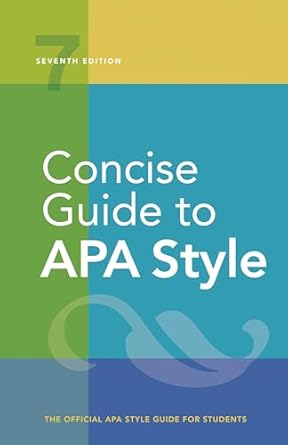[toc]
effective figure guidelines a critical analysis
Concise Guide to APA Style: 7th Edition (OFFICIAL)
Page 185 Review
Analyzing Figure Guidelines: A Critical Review
This ebook excerpt provides crucial guidelines for creating effective figures, specifically within academic writing.
Let’s delve into a closer examination of these recommendations.
The section begins by addressing supplementary information related to figures.
Abbreviations and Copyright Attributions
The text emphasizes the importance of clarity and proper attribution. “Figures C~ 161 explanations of abbreviations and copyright attributions for reproduced figures last in the general note.” This stresses the need for a comprehensive explanation of any abbreviations used within the figure, ensuring accessibility for all readers.
Furthermore, it highlights the ethical obligation to provide proper credit to the original source when figures are reproduced from elsewhere.
Failing to do so constitutes plagiarism and undermines the integrity of the research.
Superscripts and Statistical Significance
The guide details the correct placement of superscripts and how to denote statistical significance. “Position any superscripts for specific notes near the element being identified.
It is preferable to report exact p values; however, if statistically significant values are marked with asterisks or daggers in the figure, explain them in a probability note (see Section 7.14).” This instruction ensures that readers can easily understand the annotations within the figure and correctly interpret the statistical data presented.
The preference for reporting exact p-values promotes transparency and allows readers to make their own judgments about the significance of the findings.
The Relationship Between Figures
Consistency in visual presentation is key to effective communication, as highlighted by the following: “Similar figures or figures of equal importance should be of equal size and scale.
Combine figures that are alike to facilitate comparisons between their content.” This point emphasizes that visuals aren’t just illustrations but rather an integral part of conveying your message.
By adhering to uniform dimensions and strategically merging related figures, the viewer can easily compare and draw relevant conclusions from the data being presented.
This practice showcases a keen sense of organization and enhances the reader’s overall comprehension.
Photographs as Figures
The excerpt dedicates a significant portion to discussing the specific considerations for using photographs as figures. “Photographs are a type of figure with special considerations.
Photographs in most student papers can be in color and saved in any widely available photo format (see Section 7.26 for more information on the use of color in figures).
Because reproduction softens contrast and detail in photographs, starting with rich contrast and sharp detail will improve the final version of the image.” This section acknowledges the unique characteristics of photographs and provides guidance on optimizing their visual impact.
The advice to start with high contrast and sharp detail is particularly valuable, as it addresses the potential degradation of image quality during reproduction.
Ethical Considerations in Photograph Usage
Ethical considerations in the manipulation and sourcing of photographs are heavily emphasized. “However, when a photographic image has been altered in a manner beyond simple cropping and/or adjustment for light levels, clearly indicate in a general note how the image has been altered.
Ethical principles of publication forbid any intentional misrepresentation of images, just as fraudulent data manipulation is forbidden.” This underscores the paramount importance of honesty and transparency in research.
Any alterations beyond basic adjustments must be clearly disclosed to maintain the integrity of the visual evidence.
The excerpt unequivocally condemns any form of image manipulation that could be construed as misleading or fraudulent.
Permissions and Copyright
Furthermore, the excerpt touches upon permissions and copyright when using photographs: “If you photograph an identifiable person, obtain a signed release from that person to use the photograph in your paper (see Section 8.38); if the person is not identifiable, a release is not needed.
If you took a photograph yourself, no citation or copyright attribution is required in the figure note.
If you want to reprint or adapt a photograph from another source, you may need to obtain permission to use it in your paper because professional photographs are usually the property of the photographer.” These are crucial aspects of ethical publishing.
Securing releases from identifiable individuals protects their privacy rights.
Understanding copyright law is essential to avoid infringing on the rights of photographers and other creators.
Conclusion
In conclusion, this excerpt offers a comprehensive set of guidelines for creating effective and ethically sound figures.
By adhering to these recommendations, researchers can ensure that their visual representations are clear, accurate, and contribute meaningfully to the overall understanding of their work.
The emphasis on clarity, ethical considerations, and proper attribution is particularly important for maintaining the integrity and credibility of academic research.
Buy full ebook for only $18: https://www.lulu.com/shop/american-psychological-association/concise-guide-to-apa-style-7th-edition-official/ebook/product-rmzpq54.html?page=1&pageSize=4


Leave a Reply